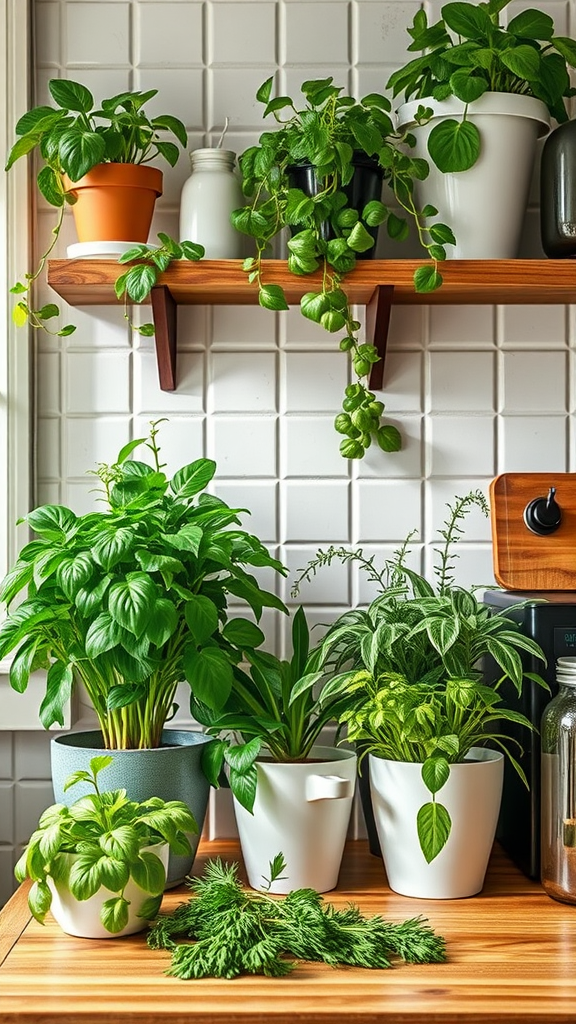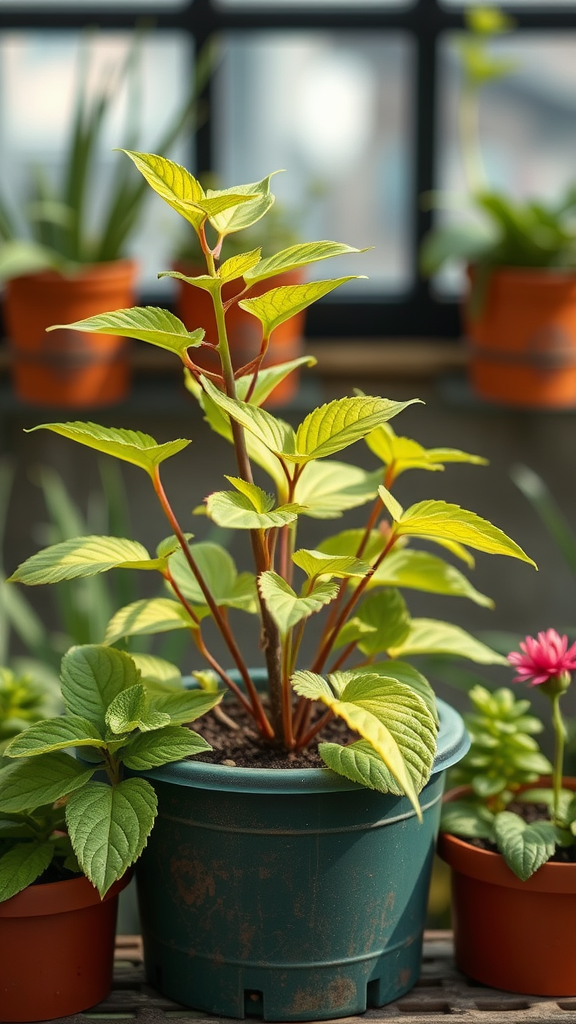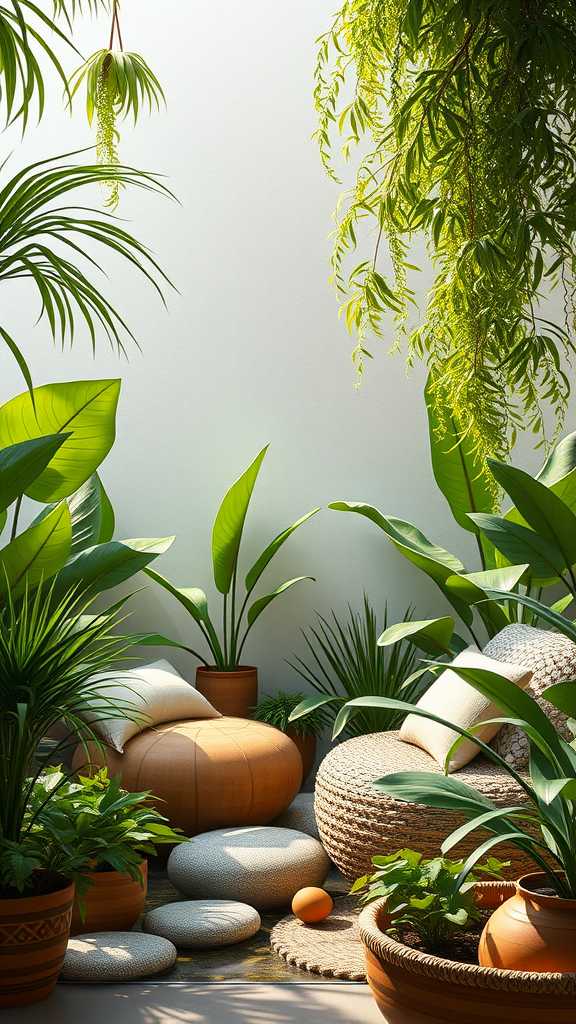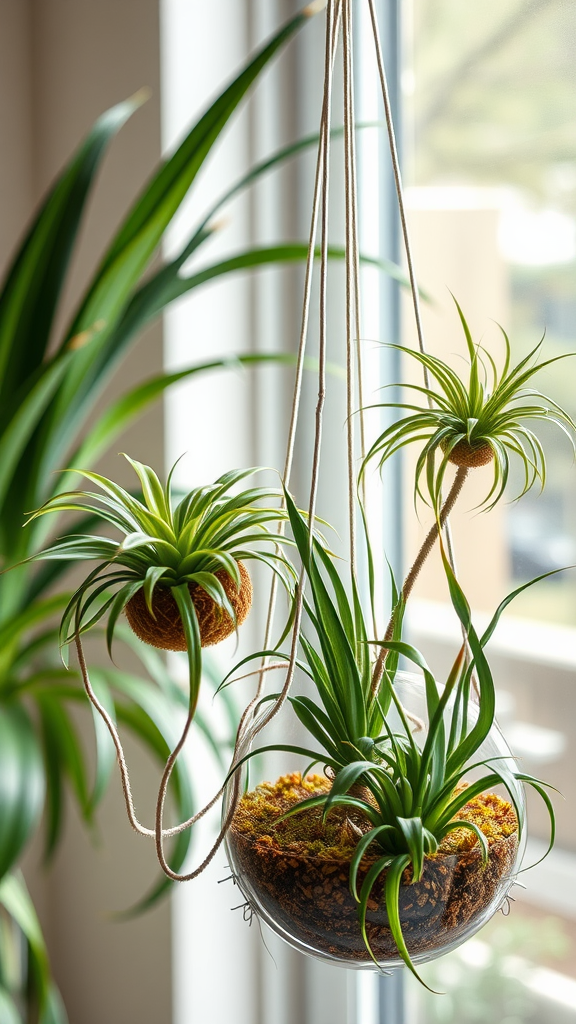The Benefits of Growing Kitchen Plants: Fresh Herbs and Greenery for Your Cooking Space
Bringing greenery into your kitchen is a delightful way to enhance your cooking space. Growing kitchen plants like fresh herbs not only adds visual appeal but also offers various health and culinary benefits that can elevate your cooking experience. Having a small herb garden in your kitchen can transform everyday meals into something special.
Enhancing Flavor and Aroma
One of the most significant benefits of growing kitchen plants is the fresh flavor they bring to your meals. Imagine snipping off a sprig of basil or cilantro just moments before adding it to your dish; the difference in flavor is remarkable. Fresh herbs contain essential oils that provide vibrant aromas and tastes that dried versions simply can’t match. Here are some herbs to consider:
- Basil – Great for Italian cooking and perfect for salads.
- Cilantro – Ideal for salsas, guacamole, and various Asian cuisines.
- Parsley – A versatile herb that can be used in almost any dish.
- Thyme – Excellent for soups, stews, and roasted meats.
- Mint – Wonderful in desserts, drinks, and salads.
Health Benefits
Fresh herbs are packed with nutrients and health benefits. They’re low in calories but high in antioxidants, vitamins, and minerals. By incorporating these herbs into your meals, you’re not only improving taste but also boosting your overall health. Here are a few health advantages:
- Antioxidants: Many herbs contain powerful antioxidants that can help fight free radicals in the body.
- Vitamins: Fresh herbs like parsley and basil are rich in vitamins A and C, which can support your immune system.
- Anti-inflammatory Properties: Herbs like turmeric and ginger can help reduce inflammation, making them beneficial for joint health.
Cost-Effective and Sustainable
Growing your own kitchen plants is also a cost-saving measure. Instead of buying fresh herbs regularly, you can grow them at home for a fraction of the cost. Additionally, this practice is more sustainable. You won’t just save money; you’ll also reduce plastic waste from packaging.
Consider how much you spend on fresh herbs at the grocery store. A small investment in seeds or starter plants can lead to a bountiful supply right at your fingertips. This not only promotes self-sufficiency but also encourages a connection with the food you prepare.
Easy to Grow and Maintain
You might think that growing kitchen plants requires a lot of gardening knowledge, but many herbs are surprisingly easy to grow. With just a little attention, you can have a thriving indoor garden. Here are some tips:
- Sunlight: Most herbs need at least 6 hours of sunlight daily. A windowsill is usually perfect.
- Water: Be careful not to overwater. The soil should be moist but not waterlogged.
- Containers: Use pots with drainage holes to prevent root rot.
Bringing Nature Indoors
Having live plants in your kitchen creates a welcoming atmosphere. The greenery can improve mood and reduce stress, making cooking a more enjoyable experience. Plants have the unique ability to create a calming environment, enhancing creativity in the kitchen. Plus, the sight of your thriving herb garden can inspire you to try new recipes and cooking techniques.
Growing kitchen plants is not just about practicality; it’s also about experiencing the joys of nurturing something from seed to table. You’ll find that caring for these plants can be rewarding and fulfilling, turning the everyday task of cooking into a delightful ritual. From healthy eating to boosting your culinary skills, growing fresh herbs in your kitchen can have positive effects that extend far beyond the plate.
So, if you haven’t already, consider diving into the world of kitchen plants. They might just transform your cooking space into a vibrant, flavorful haven.
Easy Care Tips for Maintaining Healthy Kitchen Plants at Home
If you’re looking to add life and flavor to your cooking space, incorporating kitchen plants is a wonderful idea. Not only do fresh herbs enhance your dishes, but they also create a cozy atmosphere in your kitchen. However, keeping your kitchen plants healthy requires a bit of care. Here are some easy tips to ensure your green companions thrive.
Choose the Right Location
Placement is key when it comes to growing successful kitchen plants. Look for spots that offer:
- Bright, Indirect Light: Most herbs prefer bright, indirect sunlight. Avoid placing them in direct sunlight as it can lead to scorching.
- Temperature Consistency: Aim to keep your plants in a room that stays comfortably warm, ideally between 65°F and 75°F.
- Easy Access: Place your plants where you’ll see and reach them easily. This encourages you to use them in your cooking!
Watering Wisely
Watering is one of the most crucial aspects of plant care. Overwatering or underwatering can both harm your plants. Consider these tips:
- Check the Soil: Before watering, check if the top inch of soil is dry. If it is, it’s time to give your plants a drink.
- Drainage: Ensure that your pots have proper drainage holes. Excess water can lead to root rot.
- Watering Schedule: Set a regular watering schedule, but be flexible based on changes in weather and light conditions.
Fertilizing for Growth
To keep your kitchen plants flourishing, regular fertilization is important. Here’s how to do it:
- Choose the Right Fertilizer: Use a balanced, water-soluble fertilizer during the growing season, typically spring and summer.
- Follow Instructions: Always follow the recommended dosage. Too much fertilizer can harm your plants.
- Fertilize Sparingly: During fall and winter, consider reducing fertilizer to every four to six weeks as the plants may enter a dormant phase.
Managing Pests and Diseases
Keeping your plants healthy also means protecting them from pests and diseases. Here are some steps you can take:
- Regular Inspections: Check your plants regularly. Look for signs of bugs or mold, which can spread quickly.
- Natural Remedies: If you find pests, consider using natural solutions like neem oil or insecticidal soap.
- Cleanliness: Keep your kitchen area clean. Wipe down leaves gently to remove dust and debris.
Pruning and Harvesting
Regular pruning and harvesting not only encourages growth but also keeps your plants healthy. Here’s how to prune efficiently:
- Use Clean Tools: Always use clean, sharp scissors or shears to prevent disease.
- Harvest Leaves Regularly: Taking leaves encourages the plant to grow more. Try to pick only a few leaves at a time from each plant.
- Remove Dead or Yellowing Leaves: This helps to promote airflow and allows the plant to direct nutrients to healthier leaves.
Understanding Specific Needs
Different kitchen plants have specific care requirements, so it’s important to research each type you plan to grow. For example:
- Basil: Enjoys warmth and moisture but needs well-draining soil.
- Mint: Thrives in moist soil and can tolerate some shade.
- Rosemary: Prefers drier conditions and should be watered less frequently.
By following these easy care tips, you can maintain a thriving collection of kitchen plants that not only beautify your space but also provide fresh ingredients for your favorite recipes. Happy gardening!
Conclusion
Embracing kitchen plants not only elevates your cooking space but also brings a wealth of benefits to your culinary adventures. Fresh herbs, such as basil, parsley, and rosemary, infuse your dishes with vibrant flavors and allow you to experiment with new recipes effortlessly. Beyond enhancing taste, these plants serve as a natural way to improve air quality, making your kitchen a healthier environment.
Maintaining your kitchen plants is easier than you might think. With a few simple care tips—like ensuring proper drainage, giving them adequate sunlight, and watering them appropriately—you can keep your herbs thriving. Remember to check for pests regularly and refresh the soil when needed to help your plants flourish. By incorporating these practices, you can ensure that your cooking space remains filled with lush greenery.
Bringing fresh herbs and greenery into your home inspires creativity in the kitchen. The sight of vibrant plants can boost your mood and motivate you to cook more often. Imagine plucking a sprig of thyme or a handful of cilantro right before adding it to your dishes. Not only does it taste better, but it also offers a satisfying connection to the food you prepare.
So, why wait? Begin your journey with kitchen plants today. Start small, adding a few favorites to your windowsill or countertop. With nurturing care, you’ll soon enjoy the bountiful rewards that come with fresh herbs at your fingertips. Your cooking space will transform into a delightful and fruitful haven, enriching both your meals and your life.





